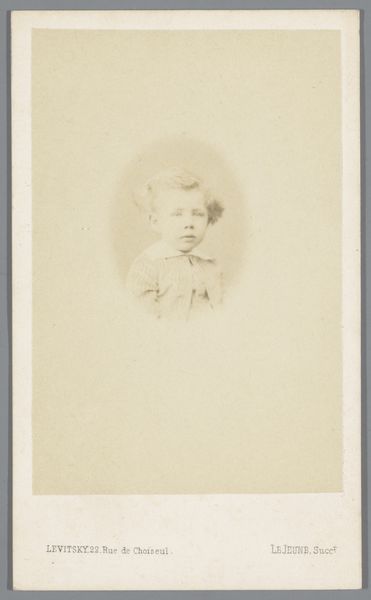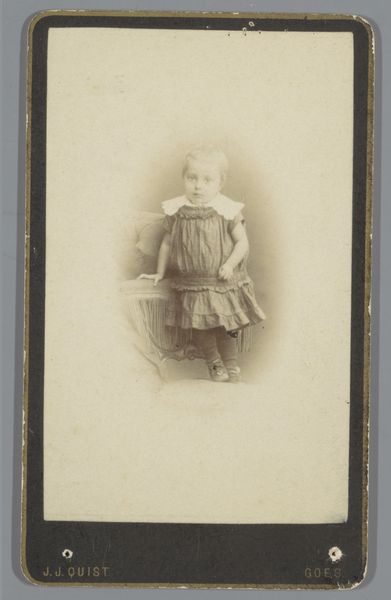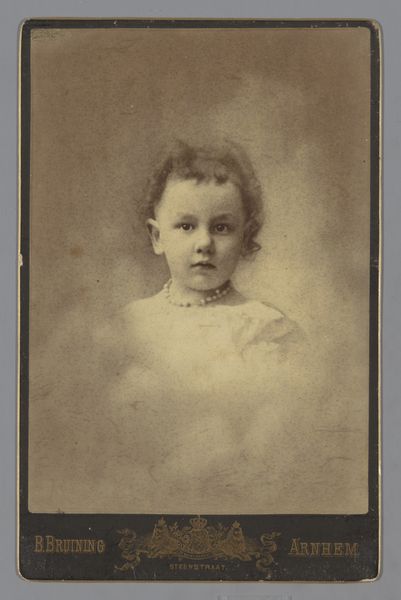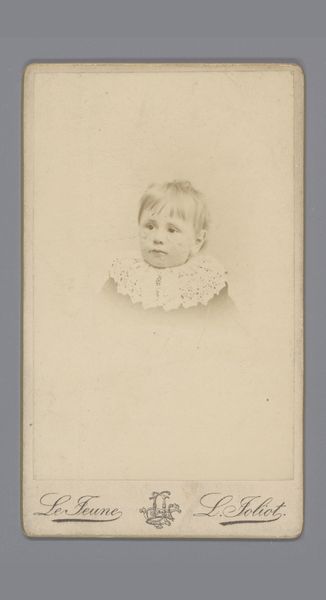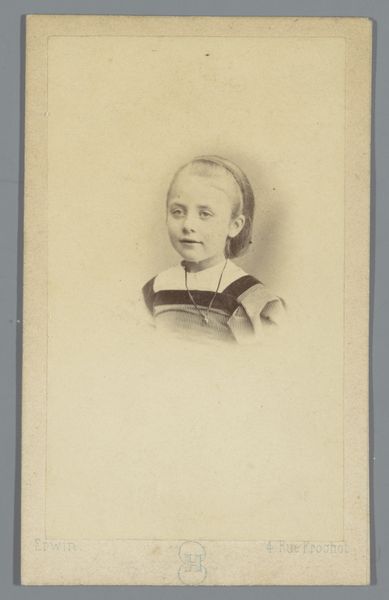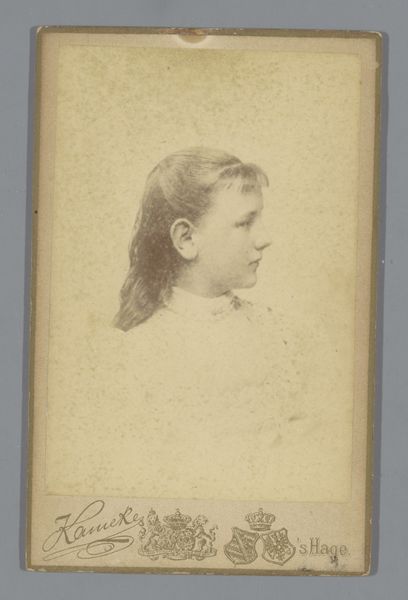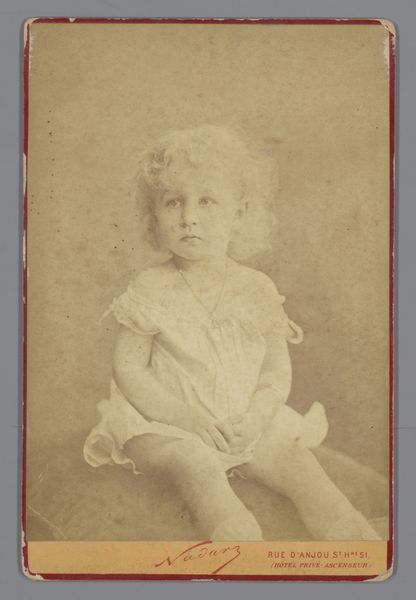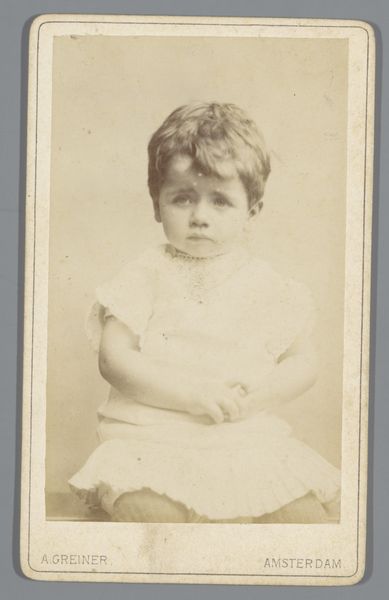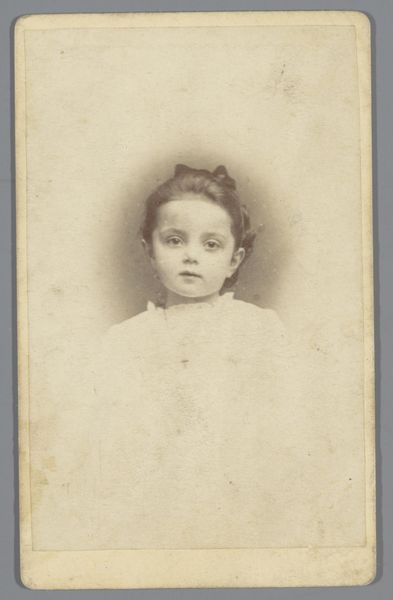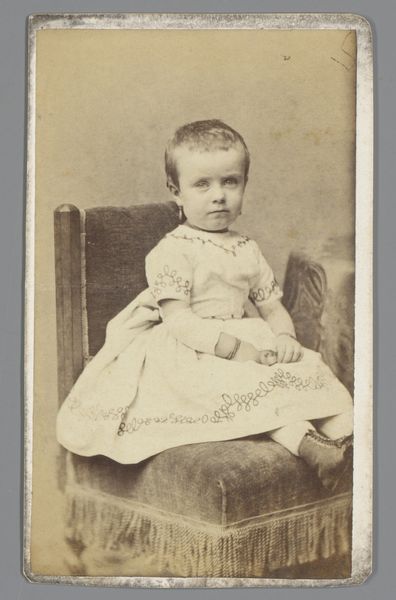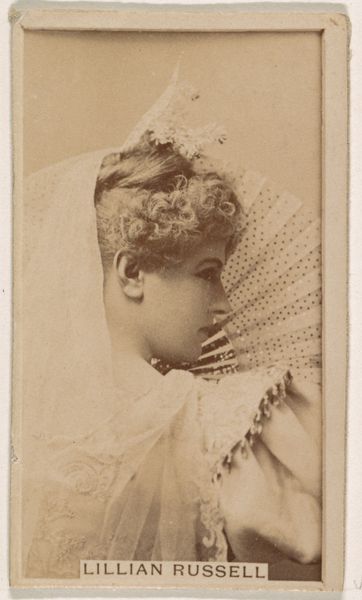![Untitled [portrait of an unidentified child] by Jeremiah Gurney](/_next/image?url=https%3A%2F%2Fd2w8kbdekdi1gv.cloudfront.net%2FeyJidWNrZXQiOiAiYXJ0ZXJhLWltYWdlcy1idWNrZXQiLCAia2V5IjogImFydHdvcmtzL2FjYmJiMTkxLTY5ODEtNDFmZC05MmQ3LWZiNTVlY2E2NGFhNC9hY2JiYjE5MS02OTgxLTQxZmQtOTJkNy1mYjU1ZWNhNjRhYTRfZnVsbC5qcGciLCAiZWRpdHMiOiB7InJlc2l6ZSI6IHsid2lkdGgiOiAxOTIwLCAiaGVpZ2h0IjogMTkyMCwgImZpdCI6ICJpbnNpZGUifX19&w=3840&q=75)
Untitled [portrait of an unidentified child] 1858 - 1869
0:00
0:00
photography
#
portrait
#
photography
#
pencil drawing
Dimensions: 3 9/16 x 2 1/16 in. (9.05 x 5.24 cm) (image)3 7/8 x 2 3/8 in. (9.84 x 6.03 cm) (mount)
Copyright: Public Domain
Jeremiah Gurney created this photograph of an unidentified child, likely in the 1850s or 60s, using the wet collodion process, a technique that allowed for mass production of images. What strikes me most is not the individual, but the rise of a culture of portraiture that this image represents. In antebellum America, photography democratized portraiture, previously reserved for the wealthy who could afford painted likenesses. Figures such as Gurney opened studios, and catered to a burgeoning middle class eager to participate in visual culture. But this wasn't simply about vanity. It was about solidifying social identity. The rise of photography coincided with rapid urbanization, industrialization, and immigration. As traditional social structures weakened, new forms of visual representation helped individuals and families define themselves in a rapidly changing world. To further understand the cultural impact of photography, one might explore period newspapers, business records of photography studios, and collections of personal letters. By doing so, we recognize that this seemingly simple portrait is, in fact, a window onto the complex social landscape of 19th-century America.
Comments
No comments
Be the first to comment and join the conversation on the ultimate creative platform.
